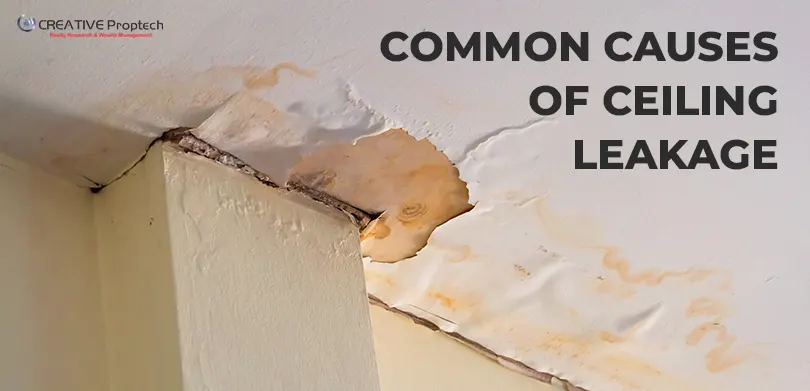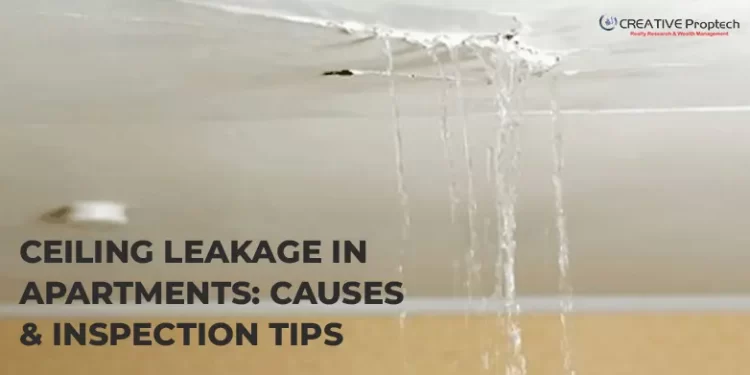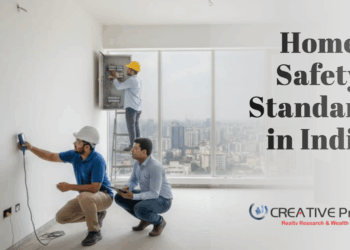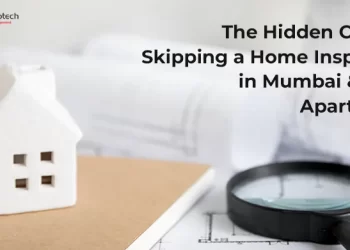Ceiling leakage is one of the most common issues faced in Indian apartments, especially in high-rise buildings. Whether caused by plumbing problems, poor waterproofing, or structural flaws, leaks can lead to damp patches, paint damage, mold growth, and even structural weakening if ignored. Detecting and addressing ceiling leakage early not only prevents costly repairs but also ensures the long-term safety and health of your living space.
Common Causes of Ceiling Leakage
- Plumbing Line Damage: Leaks from overhead bathrooms or kitchens often seep into ceilings.
- Poor Waterproofing: Weak or poorly applied waterproofing membranes allow water to penetrate over time.
- Rainwater Seepage: Improperly sealed roofs or terrace floors can allow water to drip down during heavy rains.
- Cracks in Structure: Even minor cracks in slabs or joints can become entry points for water.

Risks of Ignoring Ceiling Leakage
- Structural Damage: Prolonged seepage can weaken concrete and steel reinforcements.
- Health Hazards: Damp areas promote mold and mildew growth, leading to respiratory issues.
- High Repair Costs: Delayed action can turn a small patch into major structural renovation work.
- Reduced Property Value: Visible leakage stains can scare potential buyers or tenants.
Inspection Tips to Detect Ceiling Leakage Early
- Look for Early Signs: Peeling paint, bubbling plaster, or damp patches indicate hidden leaks.
- Check Bathrooms & Kitchens Above: Most ceiling leaks originate from wet areas in upper floors.
- Use Moisture Meters: These tools measure dampness levels behind ceilings and walls.
- Infrared Thermal Cameras: Advanced inspections can detect hidden seepage not visible to the eye.
Prevention and Maintenance Tips
- Regular Plumbing Checks: Ensure pipelines, taps, and joints are inspected annually.
- Proper Waterproofing: Invest in quality waterproofing for roofs, bathrooms, and balconies.
- Seal Cracks Promptly: Repair even small cracks before they worsen.
- Post-Rain Inspection: Always inspect ceilings after heavy rains to catch early seepage signs.
Conclusion
Ceiling leakage in apartments is a problem that should never be overlooked. With timely inspections and preventive maintenance, you can avoid expensive structural repairs and ensure a safe, healthy living environment. If you notice any early signs of dampness or leakage, scheduling a professional home inspection can save you from bigger problems down the line.
FAQs
- What is the main reason for ceiling leakage in apartments?
Most ceiling leakages are caused by plumbing issues or poor waterproofing in bathrooms and terraces. - How can I check for hidden ceiling leakage?
Use tools like moisture meters or infrared thermal cameras to detect seepage not visible on the surface. - Can ceiling leakage affect my health?
Yes, leakage leads to mold and mildew growth, which can cause breathing problems and allergies. - How often should I inspect my ceiling for leakage?
It’s best to inspect annually and after every monsoon season. - Who should I call for ceiling leakage inspection?
A certified home inspector can provide a detailed report on the source and extent of leakage.






